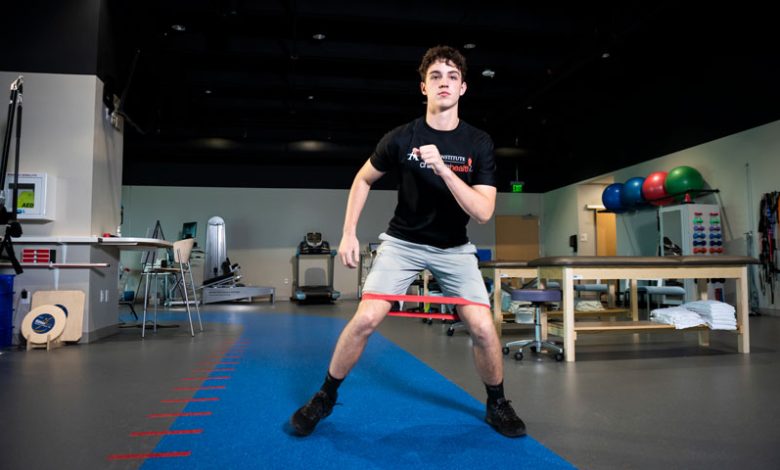What You Should Expect in Sports Medical Physical Therapy?

Sports medicine physical therapy (PT) may be beneficial for you whether you are a professional athlete or a weekend warrior. This form of physical therapy can not only help you recover from an injury, but it can also help you avoid one in the first place.
Many sports medicine physical therapists have athletic training backgrounds, and some are board-certified sports clinical specialists (SCS) by the American Physical Therapy Association.
As a result, these physical therapists are uniquely trained to treat a wide range of sports-related diseases and to suit an athlete’s sport-specific needs.
Learn more about sports physical therapy in the sections below if you have suffered a common injury like a sprain or strain, are trying to return to sports after surgery, or simply want to stay at the top of your game.
Sports Injuries That Are Most Common
Sports injuries come in a variety of shapes and sizes. However, the following are some of the most typically addressed issues:
- Sprains of the ligaments
- Strains in the muscles
- Bursitis
- Arthritis flare-ups
- Concussions
Assessment
A full evaluation is usually the first step in working with a sports medicine physical therapist. Here’s what to expect during the evaluation:
Your physical therapist will inquire about the nature of your injury or condition, any discomfort you are feeling, and any restrictions you have at home or while participating in sports. They’ll also talk about your previous performance levels and any therapy goals you have.
In most cases, a complete examination is carried out. During this phase, the therapist evaluates your range of motion, strength, and (if possible) general mechanics while you perform sports-specific actions such as running, jumping, or cutting.
A number of further tests may be conducted to assist the PT in making an accurate diagnosis.
Your PT will assess which areas of therapy you need to address in order to return to your chosen activity or exercise based on the information gathered during the evaluation. If you’re more concerned with injury prevention, this assessment can also help you discover any potentially hazardous underlying issues and direct your therapy sessions in the future.
Physical Therapy in Sports Medicine
Physical therapy for sports medicine is frequently divided into three stages:
Phase one: After an accident, this is the most critical phase, and it focuses on minimising any pain, inflammation, or swelling. Soft tissue massage and ice may be effective during this time. Modalities that produce compression and aid in pain reduction can also be used. Gentle stretching and mobility therapies aimed at regaining range of motion, as well as modest muscle activation activities, are also commonly used.
Phase two: The focus of this phase of rehab is usually on increasing strength and improving general balance. Individuals who are aiming to avoid rather than treat an accident may begin in this phase. Your therapist will teach you how to gradually load the problematic area with strength-training exercises, depending on your individual condition. They can also create a tailored exercise programme to help support the affected area. Furthermore, proprioceptive training is usually started in order to strengthen your balance and stability in preparation for a return to higher-level physical activities. Sometimes you can also get some in home physical therapy exercises.
Phase three: Sport-specific drills and exercises are introduced in the third phase of rehabilitation. Your therapist will often pay special attention to your mechanics during this stage as you replicate some of the motions required in your specific sport. They may also be able to help you improve your general endurance and establish a personalised return-to-sport timetable based on your specific circumstances. You are usually cleared to return to your intended activity at the end of PT and given a home exercise programme to follow.
Exercises and Equipment for Sports Medicine
The majority of sports medicine physical therapy treatments include exercises. While the focus and type of exercise you do depends on your condition and goals, there are numerous typical types that are used. They are as follows:
- Stretches and self-mobilization procedures are used to increase flexibility and range of motion.
- Strengthening exercises are frequently advised to assist in the development of muscle strength and the support of an injured area.
- Balance or proprioceptive training is commonly used to improve overall stability and prepare you for higher-level sports motions.
Many physical therapy facilities include a range of equipment to help with the exercises described above. The following items are examples of possible equipment:
- Bands of elastic resistance
- Weights
- Boards that wobble
- Pads made of foam
- Discs for balancing
Furthermore, higher-level technologies such as video motion analysis or isokinetic testing (a machine that formally analyses your muscle strength) may be employed in some circumstances to obtain more objective evidence on any impairments detected by your therapist.
However, in many circumstances, minimum (if any) equipment is required to make your home programme as convenient as possible.
Preventing Sports Injuries
While most sports medicine physical therapy is required following an accident or surgery; it can also be utilised to assist prevent injuries from arising in the first place.
To do so, a therapist will often check an athlete’s supporting musculature for any weakness or flexibility deficits; that could lead to an injury down the road. A thorough examination of your movement patterns is also carried out on a regular basis; to look for any issues with your mechanics whether sprinting, cutting, jumping, or throwing.
Following this inspection, a tailored plan can be put in place to address any concerns that are discovered. Injury prevention strategies have been shown to reduce lower-body injuries in athletes, such as ACL tears. Furthermore, throwing athletes have been demonstrated to benefit from strengthening and stretching regimens; which have been shown to reduce the risk of shoulder and elbow injuries.
What’s the difference between physical therapy and sports medicine?
Any medical intervention that treats or prevents athletic-related injuries or conditions is referred to as sports medicine. Surgical procedures, injections, prescription drugs, bracing, psychology, and physical therapy are all examples of this specialty of medicine.
Why should you pursue physical therapy in sports medicine?
This sort of PT may be useful if you are an athlete or an active individual; wanting to treat or prevent a sports-related condition. Physical therapy for sports medicine focuses on correcting any deficiencies that are preventing you from performing at your best and developing a specific workout regimen that suits the demands of your sport.
How can you keep sports injuries at bay?
Working with a skilled sports medicine therapist can assist you in; identifying areas of muscular weakness or tightness that could lead to injury in the future. Furthermore, by focusing on improper movement patterns and working with a physical therapist to improve your mechanics; you may be able to avoid some athletic-related diseases.





